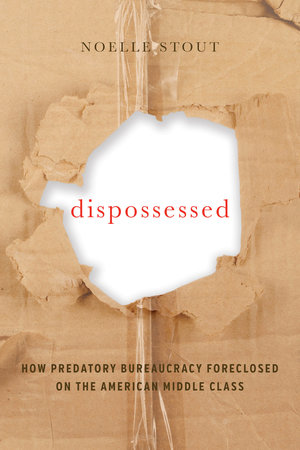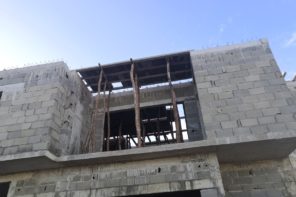
In this case, because HAMP was outsourced to lending companies with incredibly complicated, absurd, opaque and often predatory bureaucratic practices, it eventually facilitated foreclosures instead of helping residents keep their properties.
Based on a series of in-depth case-studies, the first two chapters of the book describe how Sacramento residents signed up for subprime mortgages on their house, often as a result of deceptive, sometimes even fraudulent practices, how they struggled to make their increased mortgage payments during economic recession and eventually applied for a modification of their mortgage, hoping to be able to keep their house.
In the third chapter, Stout describes how residents’ applications got sucked into the inextricable labyrinth of mortgage modifications’ predatory bureaucracies: documents kept getting lost or expired, intermediary payments deleted, and phone calls redirected until, months or years later, the request was eventually denied – or the house foreclosed. She delves into the affects (Laszczkowski & Reeves 2015) of homeowners, describing the future that they envisioned in their homes and their emotional attachment to particular places, people, and lifelong projects on the one hand, and their frustrations and anger towards mortgage bureaucracies on the other. Residents’ difficult experiences with these bureaucracies were indeed unprecedented: their other routine interactions with public services or sales representatives normally allowed them to use intermediaries who could either facilitate or take over the administrative burden. By making face-to-face interactions rare and social leverage nearly impossible, mortgage modifications bureaucracies made the middle-class’s usual strategies redundant.
Homeowners, Stout argues, often understood the difficulties that they experienced as a form of betrayal, a breach of the social contract underlying American society as a whole.
Chapter four turns to the loan modification bureaucracies themselves, the daily work and the conflicted feelings of their employees. Contrary to street-level bureaucrats working within public institutions (Spire 2008, Dubois 2010, Evans 2020), loan modification officers have very little discretion in the way they handle modification requests. Their work and conversations with applicants were surveilled and followed a specific script; the paperwork that they collected was fed to automated systems producing administrative decisions eventually aimed at maximizing profits for the banks, which often meant foreclosing people’s homes. These algorithms also ended up discriminating against black and Latino homeowners, whose properties were located in lower value neighborhoods and therefore, were almost always denied mortgage assistance – confirming the fact that underneath their often assumed neutrality, algorithms can also (re)produce biases. Between the lines, this book therefore reads as a story about new governance models involving private actors and new technologies.
In certain contexts, hybrid governance – the idea that public service are, in part, provided by private groups or individuals – seems to compensate for the ineffectiveness of the state (Poncelet, André & de Herdt 2010 ; Tshitenge 2018; De Herdt & Titeca 2019). By contrast, Stout demonstrates how, instead of providing relief, private banks robbed the American middle class of their homes, and of the tax dollars that were meant to help save these homes.
Still following residents’ trajectories, the last chapter of the book describes homeowners’ strategies once their application had been denied and they were facing foreclosure: some squatted their home until eviction, others left after they stopped paying for their mortgage. Stories of people destroying their properties flourished, suicidal rates increased.
Beyond daily interactions between homeowners and mortgage bureaucracies, Dispossessed shows how predatory finance resulted in the downward mobility of millions of Americans, whose middle-class subjectivities – and hopes for a stable, more prosperous future – were altered. It also raises questions about governance and the nature of statehood, describing dynamics similar to those associated with African states in the 1990s (Darbon 1990) – such as the idea that public funds are appropriated by those close to, or working for the state. I personally would have appreciated a more in depth discussion of some analytical issues, such as the (social, political and legal) meaning of property, the role of affects and the place of law in Sacramento’s foreclosure epidemic, but Stout’s thick description of people, places and situations nevertheless make for a fascinating read.
References
De Herdt, T. & K. Titeca (2019) Negotiating Public Services in the Congo. State, Society and Governance. London : ZED.
Darbon, D. (1990) L’État prédateur. Politique Africaine, no. 39: 37–45.
Dubois, V. (2010) The Bureaucrat and the Poor: Encounters in French Welfare Offices (Aldershot : Ashgate).
Evans, T. (2010) Professional Discretion in Welfare Services: Beyond Street-Level Bureaucracy. (London, New-York : Routledge).
Laszczkowski, M. and M. Reeves (eds.) (2018) Affective States. Entanglements, Suspensions, Suspicions. (London, New-York : Berghahn Books).
Spire, A. (2008) Accueillir ou reconduire. Enquête sur les guichets de l’immigration. (Paris : Raisons d’agir).
Poncelet, M., G. André & T. De Herdt (2010) La survie de l’école primaire congolaise (RDC) : héritage colonial, hybridité et résilience. Autrepart, 54(2) : 23–41.
Tshitenge, J-P. (2018) Le service public d’électricité dans la périphérie de Kinshasa : entre régulation de contrôle et régulation autonome. Anthropologie et développement, 48-49 : 67–95.
Noelle Stout. 2019. Dispossessed: How Predatory Bureaucracy Foreclosed on the American Middle Class. University of California Press.
Boarded Up House, Arizona: Photo by Circe Denyer, found on Public Domain (CC0 Public Domain)
Abandoned house: Photo by unknown, found on Phxhere (CC0 Public Domain)










